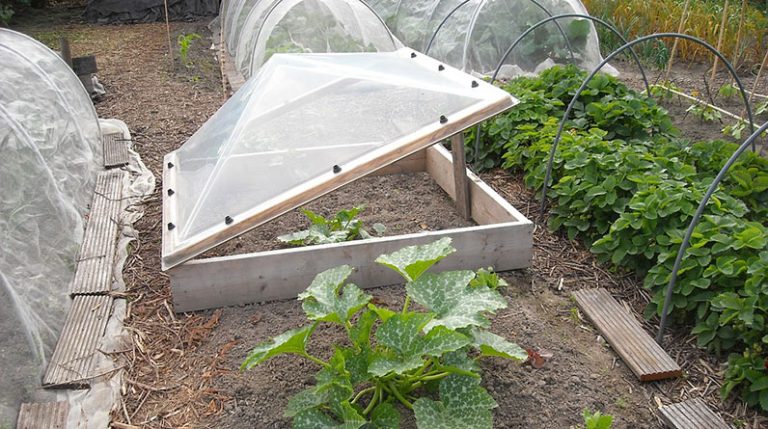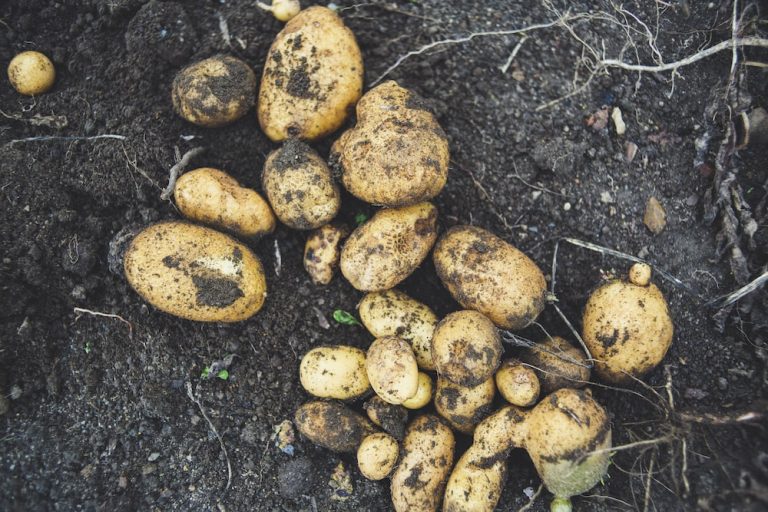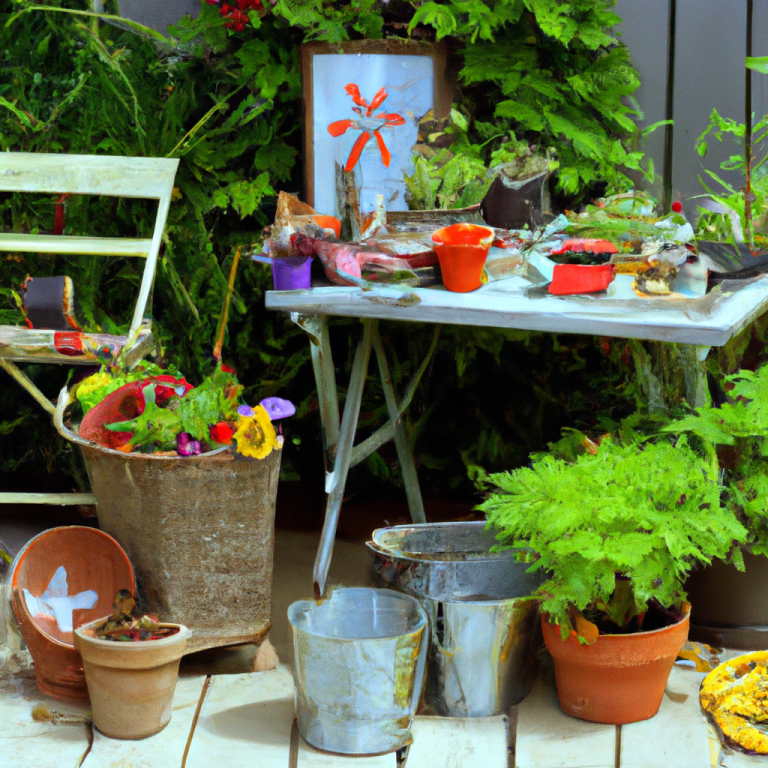How to Water Your Balcony Garden
If you want to make your balcony garden more enjoyable, you need to learn how to water it. There are many ways to go about it, but it depends on how much sunlight you can get and what kind of plants you want to grow. For example, if you want to grow tomatoes, you need at least 6 hours of sunlight daily. However, if you plan to grow vegetables, you should get at least 8 hours of sun daily.
Full sun is needed to grow vegetables.
It is important to provide your vegetable garden with full sun. The sun provides plants the energy to grow and produce their best. There are plenty of ways to ensure you have the right amount of sunlight.
For example, a time-lapse camera will help you take a picture of your garden each hour. This will help you determine which plant needs the most exposure to the sun. You can also use a full spectrum LED grow light.
Last update on 2025-11-13 / Affiliate links / Images from Amazon Product Advertising API
In addition to the sun, you’ll also need good soil. A rich, well-drained soil will encourage your plants to flourish. Toss in a bit of compost and fertilizer as well.
Vegetables that can thrive in low-light areas include leafy greens, herbs, and edible flowers. These are easy to grow and can be fun to spend your afternoons.
You may not be able to get your vegetables to bloom in the early spring, but you can still have a healthy harvest. Plants such as strawberries and squash need plenty of sunlight to be fruitful.
Tomatoes are a classic example. They are easy to grow and can be harvested in 50 to 70 days. Use a slow-release fertilizer or water them to keep them growing.
Many vegetables can be grown in containers. Just be sure to use a good potting mix. Potting mixes can contain perlite and vermiculite to improve drainage and airflow. Ensure your pots are at least 12 inches deep to prevent root-bound plants.
Many other vegetables can be grown in partial sun. Melons, cucumbers, beans, and tomatoes are all great examples.
Partial sun means 6 to 8 hours of direct sunlight.
When choosing plants for your garden, it pays to understand the terminology. This will help you select the right plant for your landscape.
You should know what a part sun and part shade is. Part shade refers to an area of your yard exposed to at least two hours of direct sunlight daily. Usually, this is a south-facing area.
On the other hand, full shade means an area of your yard that receives six or more hours of direct sunlight. Full shade is often a south-facing area, which is also likely to be the north side of your home.
Most plants require some sort of light, including direct sunlight, to begin photosynthesis. However, it can be difficult to measure the amount of light your particular area receives. Fortunately, you can test for optimal sun levels by using a time-lapse camera.
You can also check your plant’s tags for the proper sun exposure requirements. Often, this information is printed on plastic inserts in the pots.
Knowing the correct sun exposure amounts will ensure that plants thrive in your yard. It knows the number of hours of direct sun a plant requires, makes buying plants a snap. The best months to measure this are May through July when the sun is at its highest.
One of the best ways to gauge how much sunlight your backyard gets is by observing the location over a week. You can even use a time-lapse camera to photograph your garden in real-time.
Some many vegetables and flowers need a bit of direct sunlight to grow. They will even grow well in partial shade, although it does not have the same acclaim as full sun.
- Durable Metal Construction: Made from sturdy iron metal for long-lasting use.
- Versatile Hanging Location: Can be hung on railings, balconies, windows, fences, and more.
- Ideal for Plants and Flowers: Use for herbs, dried flowers, succulents, potted plants, and more.
- Detachable Hook: Can also be used as a desktop storage container or pen holder.
- Modern Style: Sleek white design complements indoor and outdoor decor.
Last update on 2025-11-13 / Affiliate links / Images from Amazon Product Advertising API
Plastic pots are preferable to terracotta pots.
If you’re trying to decide between terracotta pots and plastic containers for your balcony garden, remember a few things. First, consider the weight of the container. Larger pots are heavier than smaller ones. This makes it difficult to move around.
Another consideration is whether or not the container is water-resistant. If you tend to water your plants underwater, you should choose a pot made of durable plastic. You might also want to consider buying a container that can be recycled. Purchasing a reusable pot might not only save you money, it will make you less likely to have to replace your pot.
Terracotta pots are easy to find and affordable. They come in a wide variety of colors and shapes. Many terracotta planters also come with saucers. Some are glazed for added protection.
Terracotta is made from clay, so it is porous. It absorbs moisture and minerals from the soil. This can make it ideal for certain plants, like cacti. But it can also be prone to white mold and powdery mildew.
The surface of plastic pots can be cleaned. Soak the pot with bleach and water if you’re worried about mold.
Terracotta pots are usually neutral in color. As they age, they begin to develop a nice patina. Unlike plastic, terracotta pots are not water-resistant, so you must be careful when watering them.
Plastic pots have a larger water capacity. This is especially important if you have a plant that requires a lot of water. They are also easier to clean and sterilize. However, plastic containers can become brittle over time.
- VERSATILE GROWING OPTIONS: The 50-inch height and spacious design make this VIVOHOME garden raised bed with trellis ideal for growing vegetables, flowers, herbs, and climbing vines; Its connectable frame allows for easily configuring two planting beds at varying heights to suit your plants’ needs; Dimensions: 25.2”(L) x 11”(W) x 50”(H), with casters
- DURABLE CONSTRUCTION: Crafted from 100% natural, 350℃ carbonized fir, this VIVOHOME wooden raised garden bed with trellis is designed for long-lasting stability; The carbonization treatment reduces water absorption, retains moisture within the planter, and helps prevent deformation and cracking over time; Metal reinforced connections on the sides ensure enhanced structural stability for long-lasting durability
- DETAIL-ORIENTED DESIGN: Featuring three separate wooden panels with drainage holes, this design promotes optimal soil drainage and airflow to support healthy plant growth; The balanced trellis structure provides a stable environment for creeping and vine plants to thrive, combining practicality with aesthetic appeal; Moreover, the elevated feet design keeps plants off the ground, thereby reducing the likelihood of weeds growing directly in the planter
- MOBILE PLANTER BOX: The VIVOHOME garden planter with trellis features 4 universal wheels, two of which include brakes, allowing you to lock the planter box in place wherever you like; The 50″ high trellis is perfect for climbing plants like tomatoes and cucumbers, reducing back strain and eliminating the need to bend over; The 25” low trellis is ideal for smaller climbing plants or ground covers that don’t require much vertical space
- SIMPLE ASSEMBLY: This VIVOHOME vertical garden bed with trellis is easy to assemble; Simply follow the included instructions and use the 8 glaze-plated screws to secure the wooden boards; Then, add the four decorative end caps for a stylish finish; Perfect for decorating your living space with family and friends
Last update on 2025-11-13 / Affiliate links / Images from Amazon Product Advertising API
Create a succulent bowl
A succulent bowl is a great way to add some personality to your balcony garden. They are easy to grow and require very little maintenance. However, it is essential to choose the right pot. There are many different types of succulents to choose from. Some plants that are perfect for a bowl are Crassula, Echeveria, and snake plants.
You may consider using a terracotta bowl when choosing a container for your succulents. Terracotta is a good material because it breathes and allows the soil to dry out. Another advantage is that it comes in many shapes and colors.
If you prefer a more decorative look, try a seashell pot. This is a great way to incorporate the beauty of the ocean into your home. You can fill a seashell pot with potting soil and then cover the bottom with small shells.
If you have a terracotta pot with drainage holes, you can fill it with pebbles and gravel. The rocks will create a drainage area and prevent water from splashing into the succulents.
Once the succulents are in place, you will need to fill the space between them with the right amount of soil. You can use a mixture of 25% perlite and 50% regular potting soil. It is important to ensure that you only use filtered water on your succulents.
Watering a succulent bowl is not as complicated as you might think. The trick is to ensure the water is only applied when the soil is damp. Overwatering can lead to root rot, while too little water can stunt the growth of your plants.
Windscreens and plants help diffuse some of the wind
If you live in a place with very high winds, you may want to consider installing windscreens and plants. These devices help diffuse some of the wind in your balcony garden.
Windscreens can be made of different materials. Burlap and mesh screens are great for blocking the wind. You can also use sturdy potted plants to dissipate the force of the wind.
If you are trying to enclose a deck, you can create a windbreak by placing a shrub in the middle of the patio. This will add texture to the vertical surface and add privacy.
A wooden trellis or railing panel is another option for wind protection. You can attach the trellis to a stake in the ground or tie it to the railing. The best type of trellis for a windy balcony garden is a sturdy, woody trellis.
A stone wall can be used in a large yard to block the wind. A tall wooden fence can also be effective, as long as the fence is tall enough to keep the wind at bay.
An effective windbreak should be at least three feet wide. Rows of bushes or trees with open, airy crowns will work.
When building or repairing your balcony, you should determine the wind’s strength. It is not unusual for a city apartment to have a windy climate. Check the wind direction and height.
If you have a balcony, you should consult an architect about how to protect your balcony from strong winds. An architect can also recommend ways to reduce the wind on your balcony.










